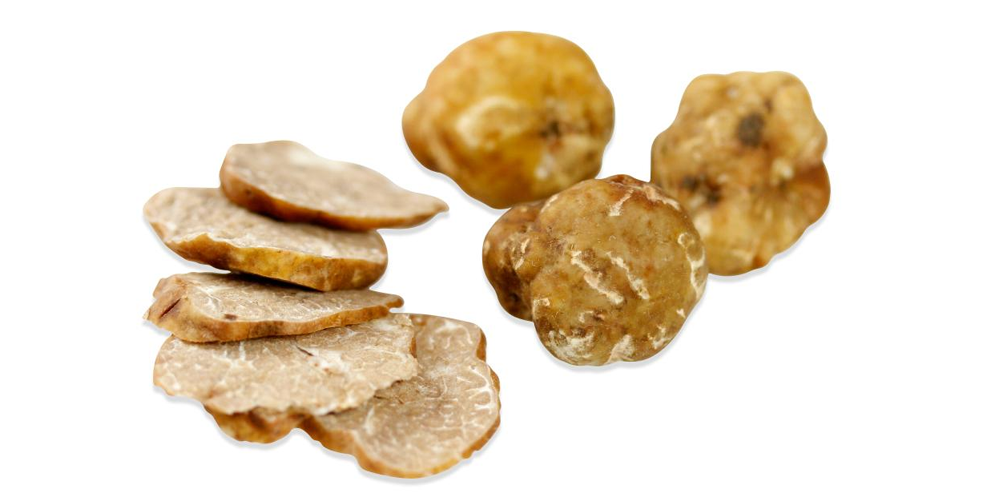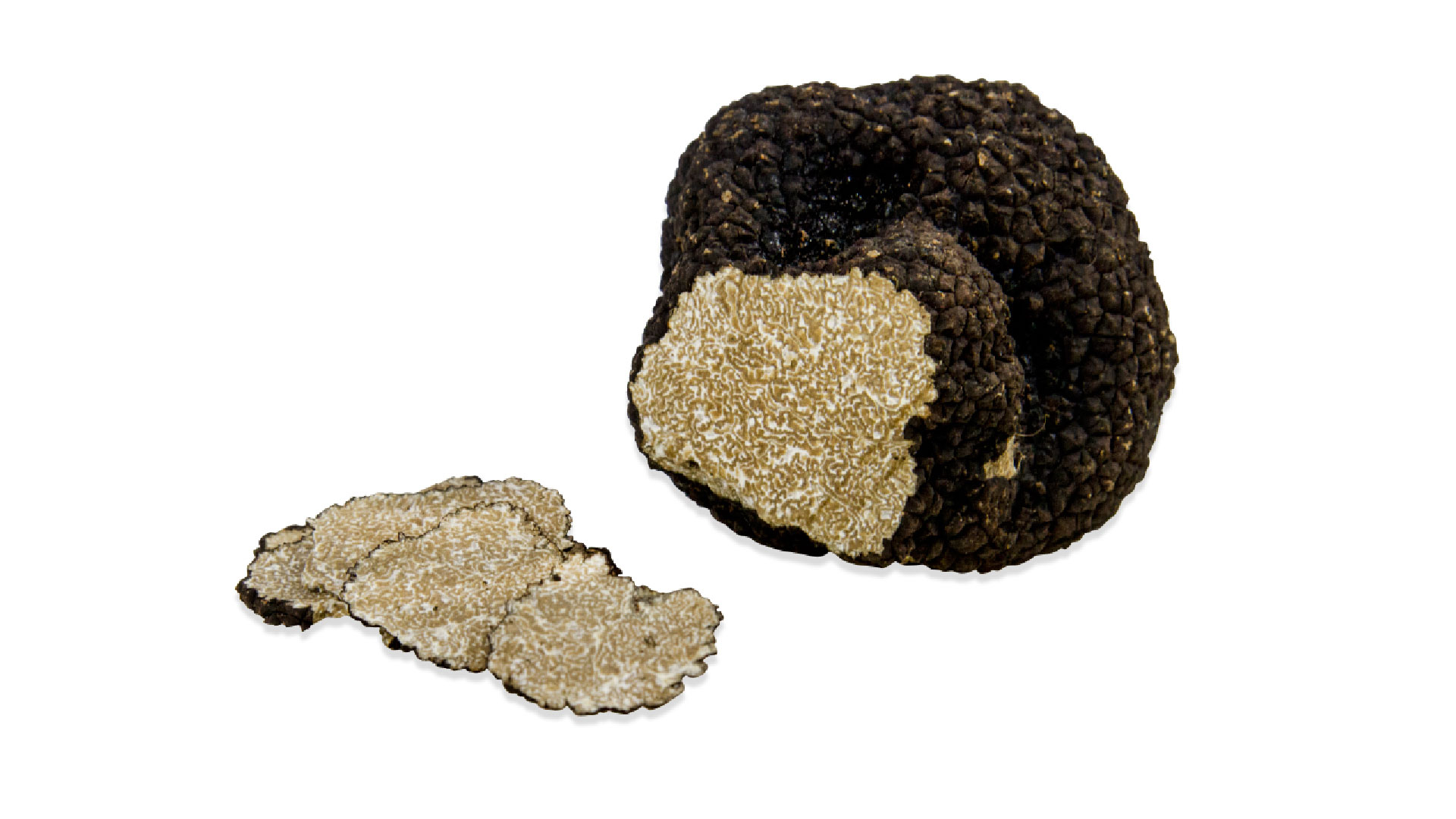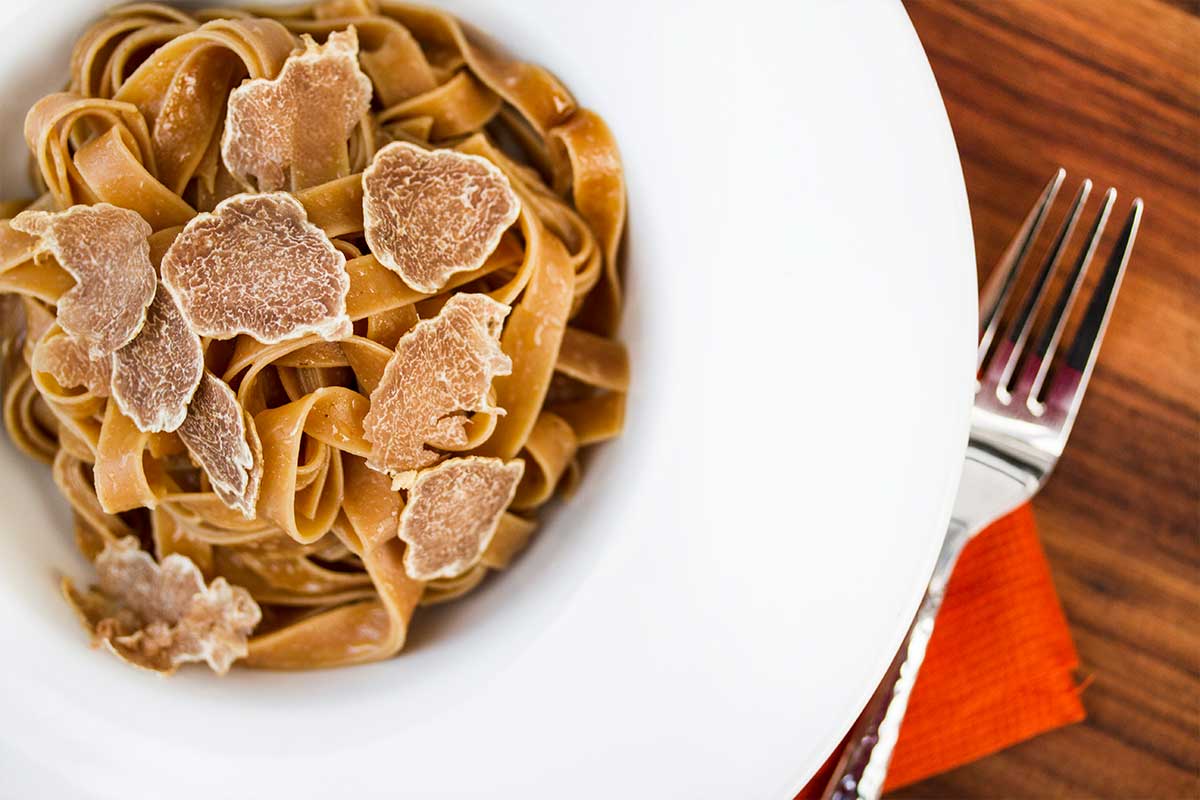HOW TO CHOOSE
THE RIGHT TRUFFLE FOR YOU
THE RIGHT TRUFFLE FOR YOU
Fresh truffles are coveted by many who enjoy fine cuisine. There’s no denying these knobby fungi are pricy however, and with so many truffle terms and origins flying about it’s easy to be overwhelmed. Consider this an introduction to the basics.
In general, the aroma and flavor of black truffles (and black truffle products) tend to be less heat sensitive, making them the preferred choice for lightly cooked applications. White truffles (and white truffle products) are more intense and complex; they are usually added to cooked food at the very last second.
All the premier truffle varieties are harvested in relatively small quantities. The primary determination of their price is their desirability. Comparing the prices of truffles gives you a good idea of their rarity and what gourmets and chefs prefer. The general rule is that you get what you pay for: the higher the price, the more intense the aroma and flavor. Thus, the following breakdown is arranged from most affordable to most expensive.

Truffle Products: A Good Place to Start
If you want to get a sense of what the fuss is all about without spending much, products such as truffle oils, truffle butters and truffle salt are affordable, non-perishable, and easy to experiment with. Read How to Use Truffle Products for all the info you need to get started.
Jarred Truffles: Not Recommended
Whole jarred truffles, truffle peelings and truffle breakings are convenient and far cheaper than fresh truffles, but they don’t really have a lot of flavor. Most chefs use them to add the texture and appearance of truffles to a dish while simultaneously using truffle oil or salt to introduce truffle flavor. We’re not wild about jarred truffles and would recommend any other truffle product instead, but they do have a place in the truffle lexicon
For the Entry Level Eater: Fresh Oregon Truffles
When you’re ready to try cooking with your first fresh truffle, stay close to home and go with a wild Oregon truffle. It’s true that they’re not as good as European truffles, but they’re not as expensive either.
Oregon white truffles Tuber Oregonense & Tuber Gibbosum (usually found Apr-Jun & Nov-Jan). Technically two different species that mature at different times of the year, these two varieties are similar enough that they are sold as the same product. Their aroma is intense yet complex. Like the famous White Alba truffle, they’re best enjoyed thinly sliced over hot food.
Oregon black truffles Leucangium Carthusianum (usually found Dec-Mar) are rarer than Oregon white truffles. They have a pungent aroma sometimes described as “earthy pineapple” and a strong flavor.
If you’re outside the normal fresh seasons, you can still get frozen Oregon truffles year-round.
For the Intermediate Eater: European Black Truffles
Italian Black Summer Truffles Tuber Aestivum Vitt (usually found May-Aug) are more subtle than the famous Perigords, which makes them both more affordable and a good choice for lighter spring and summer dishes. Their flavor has been described as sweet, almost chocolaty. These truffles are best used to finish cooked dishes. Frozen black summer truffles are available year-round.

Burgundy Black Truffles Tuber Uncinatum (usually found Nov-Feb) are a delicious truffle variety harvested in many different countries in Europe. (“Burgundy” is the name of the variety, not necessarily the place of origin.) Not as strong as the more expensive and illustrious Perigords, they’re best used to finish cooked dishes.
Bianchetti White Truffles Tuber Borchii (usually found Jan-Mar) are the smallest and least well known of the European truffle varieties. Darker in color than Alba Truffles (brown to dark orange), and often no bigger than quail eggs, they’re nevertheless quite potent and offer a similar flavor. They’re a lot more affordable than Albas, making them an excellent way to try real fresh Italian white truffles for the first time. Bianchetti truffles are best used to finish cooked dishes, as their flavor is very heat sensitive.
For the Connoisseur: The Very Best European Truffles
French Perigord Black Winter Truffles Tuber Melanosporum (usually found Dec-Mar) simply put, these are the finest (and most expensive) black truffles in the world. Perigords can be distinguished from other European black truffle varieties by their interior appearance – white veins running through black flesh. Wild-foraged and intensely aromatic with rich, deep flavor; they put all the other black truffles on this list to shame.
Perigords are the variety that benefits from some cooking. They can be diced for sauce, shaved or diced for pizza or risotto, used in classic French poultry or meat dishes where black truffle slices are buttered and slid under the skin or inserted into slits cut into meat prior to roasting, etc.
If Perigord truffles are out of season and you don’t want to wait, frozen perigord truffles are also available.
Italian White Alba Truffles Tuber Magnatum Pico (usually found Oct-Dec) If there is one truffle gourmands love more than the Perigord, (and not all of them do, to the French the Perigord is the pinnacle) it’s the peerless White Alba of northern Italy.

Like the Perigord truffle, alba truffles can be used in roasted meat applications, though many truffle purists insist that they should only be shaved raw over just-cooked food. Delicately shaved over hot white truffle risotto, polenta with pot roast, egg dishes and pasta dishes, this truffle achieves culinary nirvana for the lucky few who get their hands on it each year. Alba truffles match beautifully with butter, cheese (especially parmigiano reggiano), chicken, veal and lobster. Try adding it to aioli for the world’s most exclusive condiment.
Fresh alba truffles are the ultimate in white truffledom, but their season is fleeting. Frozen alba truffles are available year-round and very good indeed!



Comments 1
A fresh black truffle should only be washed just before cooking other wise it will spoil in the fridge. The black truffle is usually added to the hot food just right before serving. You should never use the black truffle when cooking the food or all of the taste / aroma will have disappeared by the time you serve the food.